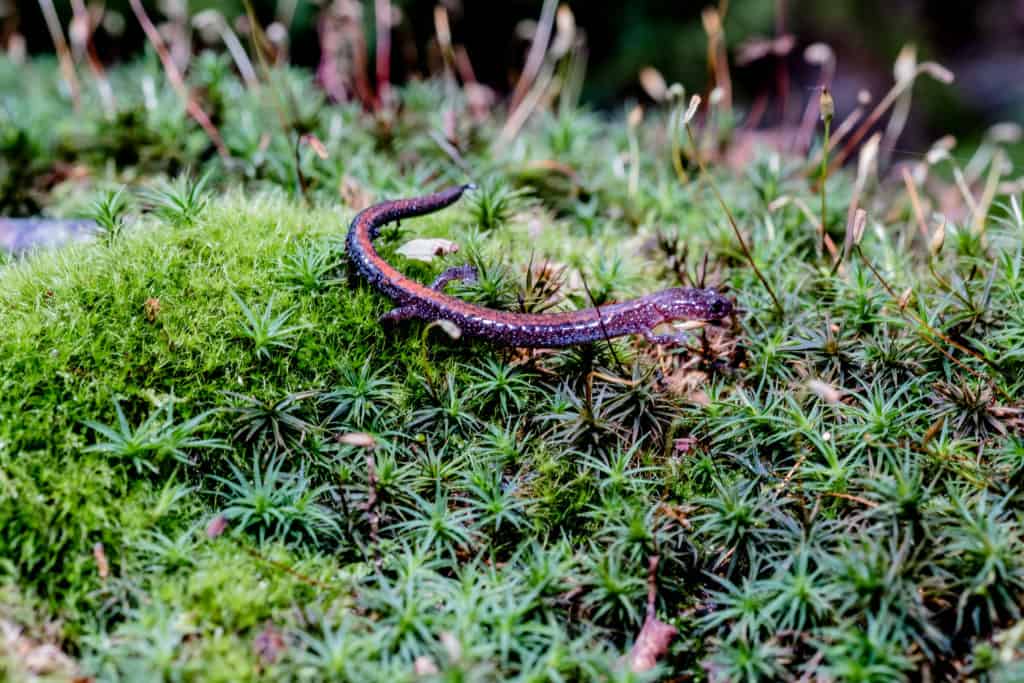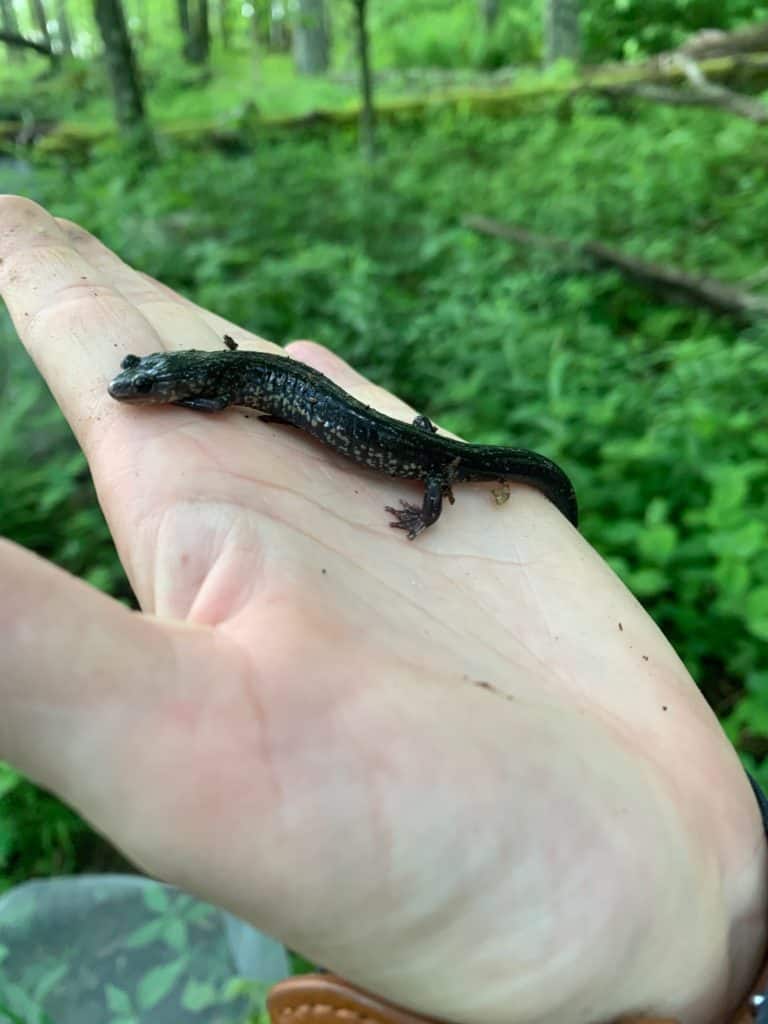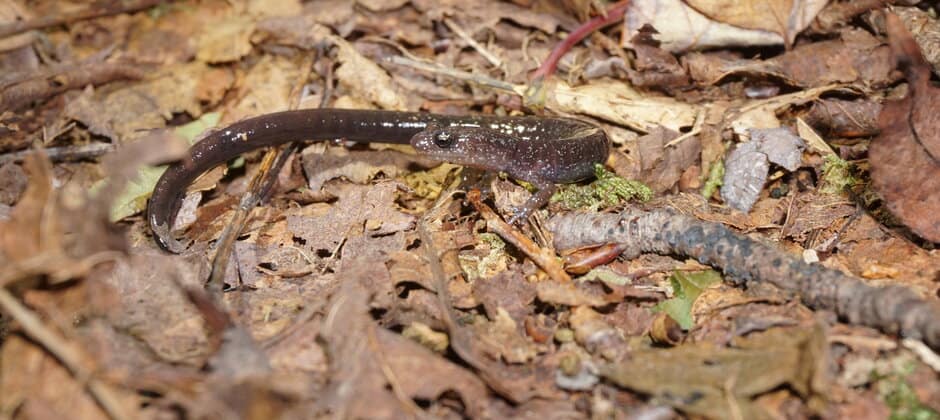Share this article
TWS2021: Cheat Mountain salamanders losing ground to climate
A rare salamander, endemic only to a few high elevation mountain tops in West Virginia, may lose all of its high-quality habitats by the end of the century due to climate change.
“It’s looking pretty grim for this species,” said TWS member Lacy Rucker, a PhD candidate in natural resources at West Virginia University.
Cheat Mountain salamanders (Plethodon netting) are found in five counties in West Virginia, mostly inside the Monongahela National Forest. With only 80 populations remaining, they are listed as federally threatened by the U.S. Fish and Wildlife Service. The amphibian populations are isolated from each other on the tops of mountains.
Rucker’s collaborator at Marshall University, Thomas Pauley, had kept a long-term database of salamander sightings in the area dating back to the late 1970s. In research presented at The Wildlife Society’s virtual 2021 Annual Conference, Rucker showed how the researchers analyzed this data for trends, and compared it to records of habitat type and climate. She and her colleagues modeled habitat suitability for Cheat Mountain salamanders as well as how those habitats would change under two climate change scenarios: a low emissions scenario and one in which nothing is done to curtail carbon emissions for the coming decades.
They found that under the high emissions scenario, little of the prime Cheat Mountain salamander habitats would still be around by 2050. Under both scenarios—low emission and high emissions—these amphibians will experience complete loss of high-quality habitat by the end of the century.
“We’re really concerned with recovering the species in the face of climate change,” Rucker said.
They also ran their models on red-backed salamanders (Plethodon cinereus), a more common species that often lives in some of the same areas but at lower elevations. They found that as the climate warms, red-backed salamanders moved up into high and moderate elevation areas where the Cheat Mountain salamanders live, possibly outcompeting them in the process.

Eastern red-backed salamanders will likely outcompete Cheat Mountain salamanders. Credit: Donald Brown
In research published this month in Forest Ecology and Management, Rucker and her colleagues found that climate helped another species, the Wehrle’s salamander (Plethodon wehrlei), to outcompete the Cheat Mountain salamander. Furthermore, red-backed salamanders may benefit from linear pathways cut for pipelines through forested areas in Cheat Mountain salamander range. Cutting the trees affects the microclimate of the surrounding forest edges, which may favor the red-backs to the detriment of the Cheat Mountain salamanders, Rucker said.

Wehrle’s salamanders are also gaining ground on Cheat Mountain salamanders. Credit: Lacy Rucker
Tracking the potential impacts of climate change and other factors on salamanders in the coming years is important due to the huge biodiversity of amphibians found in this area. Some 14% of salamander species are found in central and southern Appalachia, Rucker said, and many might be impacted in different ways by climate change.
“It’s going to be a great loss to biodiversity in that region,” she said.
Header Image: Cheat Mountain salamanders are endemic to West Virginia. Credit: Lacy Rucker








